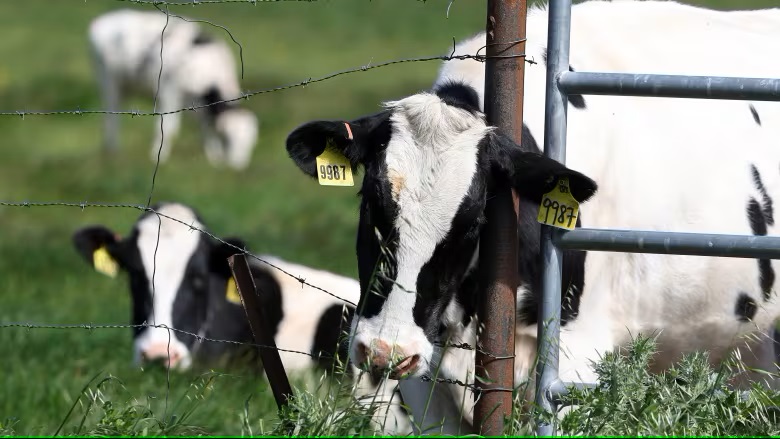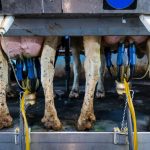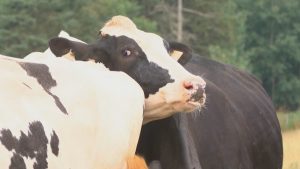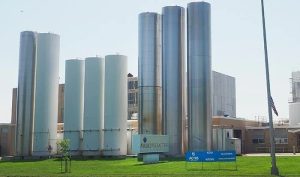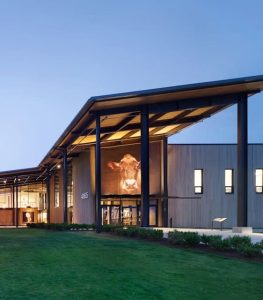
Province’s chief veterinarian urges careful monitoring.
Experts say vigilance is key as an outbreak of H5N1 continues to plague dairy farms in the United States while Alberta works to keep the highly pathogenic avian influenza out of its dairy herds.
Last week, a third dairy farm worker tested positive south of the border — this time with respiratory symptoms. Two earlier cases reported eye symptoms.
While the number of farm outbreaks continues to tick up, the number of states impacted remains at nine. Health officials in both Canada and the U.S say the risk to the public remains low.
As Alberta’s chief veterinarian, Dr. Keith Lehman is keeping a close eye on the U.S. dairy cattle outbreaks.
“[I’m] certainly concerned because we’ve seen the impact that it can have in the United States,” he said in an interview.
According to Lehman, H5N1 has been identified in 82 Alberta poultry establishments, ranging from commercial farms to backyard flocks, since April of 2022. That includes two in February of this year. All impacted flocks have been culled.
But it has not been identified in any Canadian dairy cattle.
“Knowing that [there was] a single point of introduction from wild birds, knowing that we’ve put import controls nationally that require testing of cattle coming up from the U.S., I think our risk of introduction into the Canadian herd is really dramatically reduced,” he said.
Canada introduced new import requirements last month that lactating dairy cows from the U.S test negative within seven days of export.
And surveillance is crucial, according to Lehman.
“The monitoring on farms is a really critical step. It’s something that is going to be very obvious to a dairy farm.”
Farmers are urged to report suspected cases to the Canadian Food Inspection Agency or the Office of the Chief Provincial Veterinarian.

“Our approach is to work collaboratively with the farm and their herd veterinarian to do the best to contain the disease to the farm if we had the unfortunate situation where we did have a detection in Canada.”
Lehman said testing is also available for cattle before they’re moved around within Canada.
He also recommends isolating animals prior to introducing them to the rest of the herd and strong cleaning and disinfection of equipment to minimize the risk.
And plans are in the works, among his colleagues on the Council of Chief Veterinary Officers, to introduce more active testing for H5N1 in dairy cattle.
“That’s something that we’d want to put in place nationally, across the country.”
Beyond the possibility the virus could be introduced to the Canadian herd through an infected cow, there is also the worry about another spillover event.
“That’s certainly the mystery, I think,” he said, noting that is top of mind for officials as well.
“For us to say that it couldn’t happen again would not be wise.”
What also concerns Prof. Craig Jenne is the possibility a new virus could emerge.
“The issue with influenza is it is probably our single best shape-shifting virus out there,” said Jenne, a professor in the department of microbiology, immunology and infectious diseases at the University of Calgary.
Jenne said if two influenza viruses infect an animal or person at the same time, a new virus can form, which is what led to the emergence of H1N1 in 2009.
“They can actually exchange genetic information so you can take this virus that’s currently infecting birds and cows and within one generation it’s now an expert at infecting people,” he said.
That makes controlling H5N1 key, he argues.
“We want to know where it is, who it might be mixing with and what potential lies down the road,” said Jenne.
“The current situation is not a significant health risk to Albertans or to Canadians but it does create a new player in the environment that has the potential to create viruses down the road.”
You can now read the most important #news on #eDairyNews #Whatsapp channels!!!
🇺🇸 eDairy News INGLÊS: https://whatsapp.com/channel/0029VaKsjzGDTkJyIN6hcP1K
